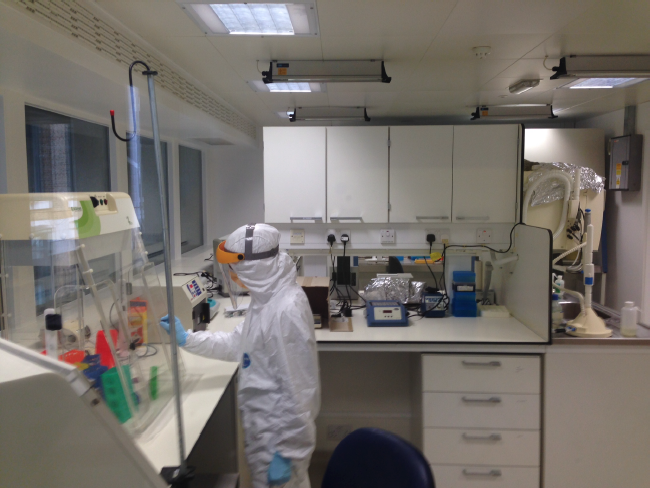Methods
Summary
To extract DNAs from ancient time, we have to made sure that what we get is what we want. We would like DNAs that belongs to our species of interest (in the aDNA world we call this endogenous DNA), and free of other contaminants such as human DNA, microbial DNA, or even dog DNA if you often go around the park with one! (called exogenous DNA). To do this, we need a special lab that could protect the samples from these contaminants. The major source of contaminants is the human that extract the DNA so of course we need to do all measures to protect the samples from us.

Sample preparations, from bone drilling or skin cutting, to DNA extraction and library preparation, ideally should all happen in such labs.
DNA extractions from the specimens also follow rigorous protocol to clean any contaminants and so does the library for sequencing the whole genome using next generation sequencing. Analysis of past population history will happen in a high performance computing (HPC) computers because the resulting data will be big, somewhat equal to the extended version of Lord of the Ring movie sequel per individual.
Challenges
Although we have tried our best, contaminants may still appear and the samples in our hand may be not containing enough DNA. There are a lot of computational methods to tackle with these challenges and we can use the ones that meet our specific circumstances.
Other challenges is to get the permits. We are dealing with protected species here and we have to make sure the digital sequence information resulting from this could benefit all relevant parties in fair and equitable ways.
Pre Analysis Plan
We hypothesised that the anoas and babirusas had been experiencing bottleneck at the industrial era, right after local people gained independence and chase economic growth, leading to rapid deforestation around the end of 19th century. This can be seen from the nucleotide diversity of the individuals, as large population tend to accumulate greater variance in the genome than small populations. We aim to use a method called PSMC, or pairwise sequentially markovian coalescent, to determine ancient effective population size; was it larger or smaller from the modern ones? By tracking the diversity of the nucleotide across a genome, we can make a guess about how many recombination leads to that genome, hence its ancient history.
Protocols
This project has not yet shared any protocols.
